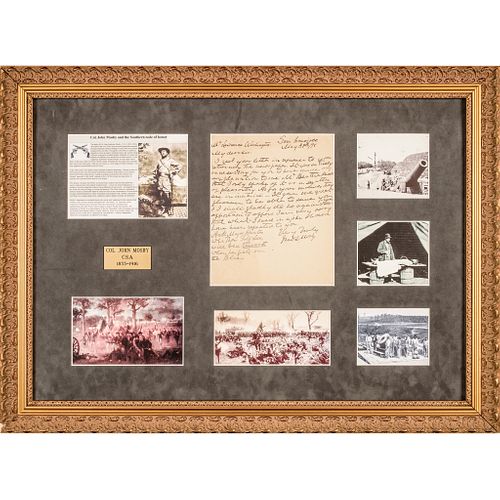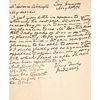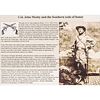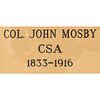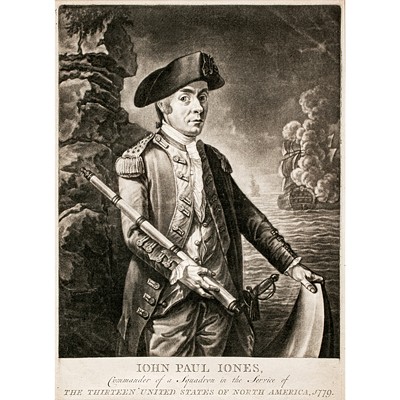Confederate Commander JOHN S. MOSBY of Mosbys Rangers Autograph Letter Signed
Lot 37
Categories
Estimate:
$2,000 - $2,400
Absentee vs Live bid
Two ways to bid:
- Leave a max absentee bid and the platform will bid on your behalf up to your maximum bid during the live auction.
- Bid live during the auction and your bids will be submitted real-time to the auctioneer.
Bid Increments
| Price | Bid Increment |
|---|---|
| $0 | $10 |
| $200 | $20 |
| $300 | $25 |
| $500 | $50 |
| $1,000 | $100 |
| $2,000 | $200 |
| $3,000 | $250 |
| $5,000 | $500 |
| $10,000 | $1,000 |
| $20,000 | $2,000 |
| $30,000 | $2,500 |
| $50,000 | $5,000 |
| $100,000 | $10,000 |
| $200,000 | $20,000 |
| $300,000 | $25,000 |
| $500,000 | $50,000 |
About Auction
By Early American History Auctions
Jan 23, 2021
Set Reminder
2021-01-23 12:00:00
2021-01-23 12:00:00
America/New_York
Bidsquare
Bidsquare : Early American History Auction of Autographs, Americana, Political & Maps
https://www.bidsquare.com/auctions/early-american-history-auctions/early-american-history-auction-of-autographs-americana-political-maps-6311
311 Lots of Rare, Historic Autographs, Americana, Civil War Era, George Washington, Abraham Lincoln, Slavery & Black History, Revolutionary War Era, Colonial America, Federal Period, War of 1812, Colonial Currency, Indian Peace Medals & more... Early American History Auctions auctions@earlyamerican.com
311 Lots of Rare, Historic Autographs, Americana, Civil War Era, George Washington, Abraham Lincoln, Slavery & Black History, Revolutionary War Era, Colonial America, Federal Period, War of 1812, Colonial Currency, Indian Peace Medals & more... Early American History Auctions auctions@earlyamerican.com
- Lot Description
Autographs
John S. Mosby Confederate Commander of "Mosby's Rangers" Autograph Letter Signed Mentioning Ex: CSA General Fitzhugh Lee with an "Inside Joke" that Lee might be a (Confederate) "Turncoat" "putting on the blue" as a U.S. Army General
JOHN S. MOSBY (1833-1916). Confederate Commander of the 43rd Battalion Virginia Cavalry, known as "Mosby's Rangers" also known as the "Gray Ghost."
September 30, (18)98-Dated, excellent content Autograph Letter Signed, "Jno. S Mosby", 1 page, measuring 7.5" x 9.25" (by sight), beautifully framed to an overall size of 31" x 23", San Francisco, Choice Very Fine. This friendly and cordial personal letter is handwritten by Mosby was to Mr. Lawrence Washington, regarding a newspaper that Mosby had loaned to him, and about which Mosby had made a joke which was taken seriously. Here, Mosby writes, in full:
"San Francisco, May 30th/98 -- Mr. Lawrence Washington: --- My dear Sir:
I read your letter in reference to your returning the newspaper. It was entirely unnecessary for you to have made any explanation to me: Mr. Beattie knows that I only spoke of it as a matter of pleasantry. As for your motives they are immaterial - It gave me great pleasure to be able to serve you, & I shall gladly do so again whenever opportunity offers. I am very sorry that what I said in a joke should have been repeated to you. -- Very Truly (Signed) "Jno. S Mosby" - (Postscript) Ask Major Houten whether Fitz Lee will be a "turncoat" when he puts on the Blue - ."
Here, John Singleton Mosby provides and "inside joke" regarding his old Confederate Army comrad in arms Fitzhugh Lee (1835-1905), who was Robert E. Lee's nephew, and served as a Confederate cavalry General, later becoming the 40th Governor of Virginia, and a diplomat. During the time of this letter's writing, during Spanish American War, Lee was made a Major General of United States Volunteers, for which he had to "put on the Blue." He then served as military Governor of Havana and Pinar del Ro in 1899. Later, Lee went on to command the Department of the Missouri. He retired in 1901 as a Brigadier General, U.S. Army.
This wonderful ALS is attractively custom matted using an appropriate charcoal gray color, together with six historical images from the Civil War and a small engraved plaque. The letter itself is well written and easily readable on very clean wove period paper. The signature is very clear and measures 2.25 inches long at the conclusion. Professionally framed for display and is ready to hang.
John Singleton Mosby was a Confederate Colonel during the American Civil War (1861-1865). As a private in the 1st Virginia Cavalry, Mosby chose his commander, General J. E. B. Stuart, as his role model and mentor. Stuart and General Robert E. Lee came to value Mosby's skills as a scout and raider. In June 1863 Confederate secretary of war James A. Seddon permitted Mosby to form and recruit soldiers for Company A, 43rd Battalion Virginia Cavalry (Partisan Rangers).
The battalion expanded steadily to the size of a regiment (approximately 1,900 men served in the command during its existence) and Mosby was accordingly promoted to colonel. The raids of "Mosby's Men" helped to demoralize Union cavalry and rally Southern support for the war.
Wounded seven times, the combative Mosby disbanded his troops, rather than surrender, on April 21, 1865. After the war he resumed his career as a lawyer and turned Republican. Mosby served as U.S. consul to Hong Kong, and from 1904 until 1910 worked as assistant attorney general in the U.S. Justice Department.
An excellent writer, Mosby devoted his latter years to letters, articles, and books defending the actions and reputation of his own command, the reputations of J. E. B. Stuart and Ulysses S. Grant, and arguing that slavery was the main cause of the war. Mosby died in Washington, D.C., in 1916.
Fitzhugh Lee (1835-1905), who was Robert E. Lee's nephew, was a Confederate cavalry General, the 40th Governor of Virginia, and a diplomat. During the Spanish American War, Lee was made a major general of United States Volunteers, for which he had to "put on the Blue." He then served as military governor of Havana and Pinar del Ro in 1899, went on to command the Department of the Missouri, and retired in 1901 as a Brigadier General, U.S. Army.
- Shipping Info
-
Early American provides in-house worldwide shipping. Please contact us directly if you have questions about your specific shipping requirements.
-
- Buyer's Premium



 EUR
EUR CAD
CAD AUD
AUD GBP
GBP MXN
MXN HKD
HKD CNY
CNY MYR
MYR SEK
SEK SGD
SGD CHF
CHF THB
THB